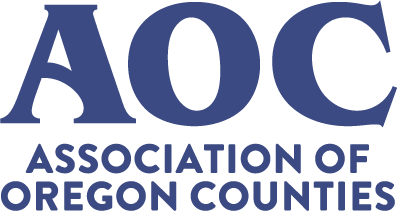
May 10, 2023 | AOC Business Partner
Last year, the CIS Board approved hiring a Cyber Risk Management Consultant to help Members prevent cyberattacks. So far, the investment is paying off with fewer cyber claims in 2022. This has led to no premium increases for CIS’ first two tiers of coverage and a 5% increase for Tier 3.
Members who have cyber coverage through CIS receive free cyber security consulting from CIS’ in-house IT expert. CIS’ coverage is tailored to counties, and often better than what can be secured from the for-profit insurance market.
To encourage CIS Members to sign up, CIS has reduced the eligibility requirements from last year so more Members can qualify. When counties have CIS cyber coverage, they receive free dark web monitoring, a cyber risk management expert to assist counties, and much more. CIS cyber coverage is reasonably priced, and unlike the cyber insurance market, CIS contributions are stable because they can self-insure the first $250,000 in limits.
Here’s what else counties need to know:
Tier 1: $50,000 Limit — No Applications Needed. The CIS Board wants to ensure every Oregon county has a minimum level of cyber coverage. The contribution is very reasonable, and we encourage Members to work with their Agents to place this coverage with CIS.
Tier 2: $250,000 Limit ($200,000 excess of $50,000) — Application Required. To help counties obtain this coverage, CIS has reduced the minimum requirements to:
- Having a cyber security policy
- Strong passwords
- Offsite backups
- Training employees
- Having CIS Property and Excess Crime coverage (Required)
Tier 3: Up to $1,250,000 Limit (up to $1M excess of $250,000) — Qualifying for Tier 2 can also qualify for Tier 3. Tier 3 is a fully insured program. Keep in mind that this excess coverage program is in addition to the $250,000 limit.
For additional information contact Greg Hardin at 503-763-3889. To download and complete an application, visit cisoregon.org/PropertyLiability/Cyber. Counties can also contact Tena Purdy at tpurdy@cisoregon.org or Karen Masterson at kmasterson@cisoregon.org for more information.
Contributed by: Bill LaMarche | CIS Public and Member Relations Manager
*Sponsored content provided by AOC Business Partner.

May 10, 2023 | AOC Business Partner
The CIS Benefits team is hosting a free Wellness Academy at the Embassy Suites in Tigard (near Washington Square), May 17-18. The Academy is designed for HR and wellness committee members considering refreshing their worksite wellness programs. The event is offered exclusively for members with CIS Benefits’ medical coverage. Breakfast and lunch are provided on Wednesday and Thursday. Attendees are on their own for dinner Wednesday evening.
The Wellness Academy features Andrea Herron as keynote speaker. She serves as the “head of people” for WebMD Health Services and is also a published author of There’s an Elephant in Your Office. During her keynote, Herron shares how poor mental health doesn’t disappear when an employee clocks in for work.
“Mental health is something we all have, yet we don’t always know how to best support ourselves or those around us,” said CIS Executive Director Patrick Priest. “We encourage member counties to join us for Herron’s unique perspective on mental health in both physical and virtual workplaces.”
In addition to Herron’s keynote address, the two-day event features a variety of topics, including:
Why Connection is So Important for Mental Health
“You are Not Alone” is the campaign launched by the National Alliance on Mental Illnesses. In this session CIS members will learn more about the nationwide campaign and discover some helpful digital tools.
The Food of Your Dreams
What one eats and how one sleeps has a direct impact on mental health. This session features the Dos and Don’ts for good mental health.
CIS Wellness Resources and Updated Grants
During this panel discussion, CIS members will share wellness ideas that have worked (and some that didn’t).
The Go-Game
Secret Agent is a fun puzzle game where teams receive spy training, think on their feet, and collaborate to save the world from nefarious hackers.
Resilience: A Different Perspective
Rest and recovery in environments of constant change and pressure is critical to good mental health. Resilience — the ability to successfully cope, adjust or recover from stress — is a skill one can learn over time, resulting in many health benefits. This session shows how one can develop skills for self-care and live with purpose.
Solutions vs. Stigma — The How, What and Why of Mental Health and Addiction Medicine
During this session, Kaiser Permanente experts share why employees need help now more than ever before. They’ll bring to light how a county’s workforce can flourish when mental health and addiction is destigmatized. Kaiser has many mental health and addiction medicine services and resources available to members — and can connect member-county employees to the help they need.
We are in this TOGETHER –– HERO Scorecard
Discover how the HERO Scorecard helps organizations learn about well-being-related best practices and how counties can improve them over time.
Wellness Programs Best Practices
So, how does an organization improve employee wellness? CIS reveals the six key questions one needs to ask to achieve better results. Employers, consultants, and vendors are under pressure from regulators and customers to supply more information about their benefits projects and other employee advantages. In this session, counties discover strategies for aligning their wellness initiatives with organizational goals, resulting in a stronger company culture.
Mini Grants/Shark Tank Winners
CIS Benefits is offering mini “Shark Tank” grants to select attendees for their commitment to wellness over the years. Learn more about this opportunity at cisoregon.org/sharktank.
Seating is limited for the May 17-18 Wellness Academy, so CIS members should register today, HERE.
Note: Registration for this event is processed through the CIS Learning Center and will require a login to the site. If you have questions, please email learn@cisoregon.org.
Contributed by: Bill LaMarche | CIS Public and Member Relations Manager
*Sponsored content provided by AOC Business Partner.

May 10, 2023 | AOC Business Partner
Every snowflake is one of a kind. That’s because each one takes a different path as it moves through the sky, picking up water vapor along the way and ultimately forming a shape all its own.
You can say the same thing about people. We all travel different paths through life and each experience touches us and uniquely shapes our personalities.
And, as we face inevitable ups and downs, many of us also may need help to make sense of things and be our best at work and at home.
Mental Health Awareness Month gives us an opportunity to shine a light on the importance of caring for our mental health.
One in five adults lives with a mental illness according to the National Institute of Mental Health. The Centers for Disease Control and Prevention (CDC) reports more than four in 10 students in grades 9-12 felt persistently sad or hopeless and nearly one-third experienced poor mental health. The CDC further reports children as young as age two have been diagnosed with a mental, behavioral, or developmental disorder.
Behavioral health issues – encompassing mental health and substance use disorders – do not discriminate by age, gender, race, income, geography or other distinguishing factors.
The good news is that most mental health and substance use conditions are common and treatable.
Because each person faces their own unique challenges, there is also no one-size-fits-all approach to treatment. That’s why Regence members have access to a wide range of tools and resources to live life to the fullest.
We’re here to help.
If you or your loved one needs emotional support or mental health care, we can help you find the behavioral health care option that fits your needs. Most of our health plans offer virtual mental health treatment options from providers such as AbleTo Therapy+, Doctor on Demand, Talkspace, Charlie Health and more. No referral is needed – you can visit the provider website and fill out their intake form for an appointment.
In addition to the broad range of traditional and virtual mental health providers, most Regence members have access to specialized behavioral health care for those seeking help for eating disorders (Equip) and obsessive-compulsive disorders (nOCD).
Regence also offers access to traditional and virtual substance use disorder treatment providers such as Boulder Care, Eleanor Health (WA only) and Hazelden Betty Ford. If your employer has an employee assistance program (EAP), your use of the program is confidential and at low or no cost.
We encourage you to visit these providers’ websites or call our customer service team at the number listed on your member ID card to verify which virtual care and traditional behavioral health options are available through your health plan.
Remember 988 – the new National Suicide & Crisis Lifeline. When people call, text, or chat 988, they will be connected to trained counselors who will listen, understand how their problems are affecting them, provide support, and connect them to resources if needed.
Contributed by: Regence BlueCross BlueShield of Oregon
*Sponsored content provided by AOC Business Partner.

Apr 27, 2023 | AOC Business Partner
Regional Solutions Visits Gilliam County
The Regional Solutions staff in the governor’s office convenes together once a month to think big about the program, share notes on problem solving, and appreciate the context of our colleagues’ work. Our plan is to periodically hold these gatherings in the field to connect to local communities and see the practical applications of our work. We were very grateful to Gilliam County for hosting us for the first of these field meetings during the Kotek Administration. The team had the opportunity to tour the Columbia Ridge Landfill—the largest landfill west of the Mississippi River—and the Chemical Waste Management Site near Arlington. The Waste Management staff also shared plans to create a renewable natural gas facility with carbon capture technology that will use gas byproduct from the landfill to create energy and limit greenhouse gas emissions. The team discussed Waste Management’s long history and engagement with the county, including recent partnership with the county to help address housing shortages for Waste Management’s workforce. Many thanks to the Waste Management team for their hospitality.
Over lunch, the team also had the chance to catch up with Port of Arlington Director Jed Crowther, who updated us on key initiatives within the county. Director Crowther shared updates on the many projects that the county, port, and other partners are engaged in, including the rehabilitation of the Condon Elementary School for housing and other community uses (utilizing Brownfields funds from Business Oregon), a plan by the Port to create shovel ready land in Arlington for further residential development, and collaborative efforts to create more affordable childcare opportunities. On all of these fronts, the county continues to make critical and large investments. The Regional Solutions team is engaged in many of these efforts, and Nate Stice and Courtney Crowell, who share coverage for Gilliam County, were able to share context on several projects.
Again, a big thank you to Director Crowther for joining us for a rich discussion, and to Gilliam County and Judge Liz Farrar Campbell for allowing the use of their facilities.
Greater Eastern and Northeast Regions
- City of Echo Pedestrian Safety Bridge: Within the city of Echo there are two sets of railroad tracks that cut through the community, with one of the tracks becoming a parking lot for trains in the area. Unfortunately, the Echo school is right near the tracks and the nearest pedestrian crossing is almost a half mile down the road, so many times kids end up crossing the tracks and when there are trains parked there, they can’t see and it becomes a huge safety concern. The Oregon Department of Transportation (ODOT) has partnered with the city to put $2.5 million towards planning and design of a safety solution. Representative Bobby Levy (R-Echo) is requesting $4 million to create a pedestrian bridge that would run from the school, over both sets of train tracks to the other part of town. Regional Solutions will continue to follow this issue and help with either the implementation of the pedestrian bridge or looking for other solutions.
- Umatilla Basin Water Quantity Issues: Regional Solutions brought together the Oregon Water Resources Department (OWRD), the Port of Umatilla and the Mid-Columbia Water Commission to discuss concerns related to an instream lease of the Port of Umatilla being used for mitigation by the Mid-Columbia Water Commission in order to use water out of the Columbia River for irrigation. Regional Solutions is working to improve communication and find a path forward for this year’s mitigation efforts. Both OWRD and the Mid-Columbia Water Commission are working on finding solutions over the next few days to solve this issue in the short-term.
- Confederated Tribes of the Umatilla Indian Reservation/City of Pendleton Transportation Planning: Regional Solutions and ODOT convened a meeting between the city of Pendleton and the Confederated Tribes of the Umatilla Indian Reservation (CTUIR) to discuss the large-scale transportation projects surrounding exits 209 and 216 and Highway 331. For the past few years both CTUIR and the city of Pendleton have individually applied for federal funding through the Rebuilding American Infrastructure and Sustainability Equity (RAISE) grant program and haven’t been successful. The city of Pendleton is trying once again with matching assistance from ODOT but should they prove not successful this year, we are beginning to have conversations about how the three entities (CTUIR, city of Pendleton and ODOT) might be able to coordinate together to make a joint application for a larger and more comprehensive regional transportation project. Not only are their freight issues in this region but there is significant safety concerns associated with this larger project. The hope is that by working together we might have a better shot at the federal funding. RS will continue to help strengthen the working relationship and see if there are ways to work together over the next year.
- Baker City Wastewater Project: Regional Solutions met with both the Department of Environmental Quality (DEQ) and Baker City recently to discuss their ongoing challenges with their wastewater treatment project. The good news is that DEQ has put out for public comment the city’s Recycled Water Plan which, once approved, will allow the city to land apply their wastewater on land approved by DEQ. This public comment period will last for 30 days and if the city feels they are close to overflowing their lagoons, DEQ has said they will approve a special use permit within 48 hours to allow the city to land apply wastewater. We also discussed what DEQ will need to allow additional land to be brought into land application (medium term solution) and the city is working on providing that information. Regional Solutions will continue to bring the city and DEQ together monthly to discuss next steps and ensure that communication is going smoothly.
- Verde Light Community Solar Project: Regional Solutions has been working for the past couple of weeks with a community solar project in Ontario that is running into regulatory challenges between state agencies. This is a small solar project that has received a $900,000 Oregon Department of Energy (ODOE) grant and is about to receive a $1 million United States Department of Agriculture (USDA) grant to provide solar for the city of Ontario. The land is zoned heavy industrial and was planned to be a truck stop prior to this community solar project. This project has gone through the National Environmental Policy Act (NEPA) to account for federal environmental needs, and the land has been deemed not a wetland by the U.S. Army Corps of Engineers. However, the state has determined that the land includes a wetland and there are regulatory challenges between the Department of State Lands (DSL) and DEQ to issuing a final permit. Regional Solutions is working with DEQ and DSL to try and find a path forward for this project.
North Central and North Coast Regions
- Dog River Pipeline: The City of The Dalles has engaged the Regional Solutions Team over the last several years on a project to replace 3.5 miles of aging wooden water supply pipeline that serves as the main water supply for the city. The former pipeline leaked nearly a million gallons a day. The project is designed to create more resilient infrastructure for the community as well as supporting environmental values as well. In particular, the pipeline will include new fish passage and screening systems at the pipeline intake. The project includes a $1 million investment from the Oregon Water Resources Department and financing from Business Oregon.
- Update: The team continues to work with the city through the permitting and construction of the
project and met with the city this week to help navigate part of the process.
- Childcare Center Project: Regional Solutions has been participating in an effort to house a new childcare center in The Dalles. The project is led by the Columbia Gorge Education Service District and Columbia Gorge Community College Child Care Resource and Referral. Regional Solutions helped the college to secure a legislative allocation to move the project forward. The project group has spent the last year looking at economic models, partnerships, and potential locations, and have identified an underutilized school district property as a potential site for the project: the Chenowith Middle School site.
- Update: Regional Solutions team members rejoined the project steering committee and received an update on engineering and cost estimates for rehabilitation of the site. The middle school will require significant investments to put it into service as a childcare center. The team will work with the Educational Service District (ESD) and college to explore funding option both for repair of the property and ongoing operations.
- City of St. Helens: The City of St. Helens has undertaken a comprehensive look at redeveloping their downtown waterfront district. Of particular interest are brownfield sites where Boise Veneer and Boise White Paper were once located. Three key waterfront properties totaling over 250 acres that provide catalytic redevelopment opportunities for
the city. The city plans to restore the connection between downtown St. Helens and the Columbia River, provide public access to the waterfront, and preserve the natural and cultural heritage of St. Helens.
- Update: Thanks to the City of St. Helens for taking the time to get me up to speed on the project and share the many other amazing efforts under way in the community.
South Coast & Southern Oregon Regions:
- Roseburg Forest Products announced on Friday a suite of planned investments in Southern Oregon totaling $700 million over the next four years. These investments include the creation of two new, state-of-the-art factories at the company’s Dillard, Oregon complex. The new Dillard Medium Density Fiberboard (MDF) plant will make MDF and High Density Fiberboard (HDF) panels, and the planned Dillard Components facility will convert specialty MDF made at the company’s Medford, Oregon plant into Armorite™ Trim, a new exterior trim product developed by Roseburg Forest Products. Both new plants are anticipated to begin operations in 2025 and will employ approximately 120 people once completed. In addition to these new plants, Roseburg intends to invest $200 million into modernizing its plants in Riddle and Coquille. The Regional Solutions ream worked hard to help encourage this investment: after working with the company to understand their business needs, which included funding and regulatory certainty, Business Oregon awarded a grant of $3 million from the Emerging Opportunity Fund to help purchase machinery for the $45 million Dillard Components plant, while the Department of Environmental Quality’s Air Quality team provided technical assistance around air quality permit application preparation and timing.
Resources
Workforce Ready Grants Available:
The Oregon Higher Education Coordinating Commission (HECC) has opened the Request for Applications (RFA) for Workforce Ready Grants, Round Two: Innovation in Workforce Programs to support the education and training needs of Oregonians through Future Ready Oregon.
Future Ready Oregon is a comprehensive $200 million investment package that supports the education and training Oregonians need for good-paying jobs, prioritizing underserved and historically marginalized communities. You can learn more about Future Ready Oregon on the HECC Future Ready Oregon webpage. Workforce Ready Grants are the largest component of Future Ready Oregon and will be available on a phased or rolling basis through 2024. In round one, the HECC released $10 million in capacity-building grants to broaden the type and number of organizations that comprise Oregon’s workforce system.
The second round focuses on innovative and collaborative workforce development programming and partnerships that center the needs of Oregon’s historically underserved communities. Up to $35 million may be awarded to develop education and training programs that connect individuals to the resources they need for good-paying jobs and meaningful careers. Investments will advance opportunities to recruit and retain a diverse workforce in key sectors of Oregon’s economy— healthcare, manufacturing, and technology.
Who is Eligible
The HECC welcomes applications from community-based organizations and workforce service providers that administer workforce programs in the healthcare, manufacturing, or technology sectors and prioritize equitable program participation by individuals from priority populations.
How to Apply
The RFA document—which details eligible activities, timelines, guidelines, and requirements for applications—can be found on HECC’s Grants and Contracts webpage. The RFA has been posted in both English and Spanish and can be made available in additional languages upon request. The application deadline is June 23, 2023.
Support for Applicants
Potential applicants have access to technical assistance providers who can help them understand the terms and requirements of the RFA, as well as provide feedback on application materials, free of charge. Contact information for technical assistance providers is included in the RFA.
Additionally, HECC will host four virtual information sessions. These sessions are free, and participation is optional but encouraged.
- Session 1, Monday, April 17, 1-2 p.m.
- Session 2, Tuesday, April 25, 4-5 p.m.
- Session 3, Wednesday, May 3, 1–2 p.m.
- Session 4, Wednesday, May 10, 4:30–5:30 p.m.
Once you have registered, you will receive an email with the meeting link. Please email FutureReadyOregon@hecc.oregon.gov if you do not receive the link, or if you have additional questions.
Contributed by: Regional Solutions

Apr 24, 2023 | AOC Business Partner
Portland State University (PSU) Center for Public Service Fellowships Program has recruited exceptionally qualified, trained, and diverse fellowship candidates from prestigious institutions throughout the U.S. to serve as project managers for Oregon’s public sector in 2023-24.
Our fellows provide skill capacity near-term to ensure critical projects are completed, despite staffing constraints. Candidates are prepared to support counties in areas such as research and analysis, community engagement, program evaluation, and so much more.
The Hatfield Resident Fellowship (program cost: $45,200) is an eight-month commitment for recent Master’s and Ph.D. graduates. The Oregon Summer Fellowship (cost: $11,030) is a 10-week program designed to accommodate currently enrolled graduate students.
Our applicants are screened rigorously and have a strong record of scholarship and demonstrable interest in areas including climate policy, health equity, public administration, and beyond.
There have been multiple fellowship projects sponsored by counties in recent years. Seeking to develop succession plans for key positions within their organization, a county contracted with PSU for an Oregon summer fellow to assist with a review of best practices, the development of new institutional relationships, and an update to the county’s workforce processes. Ultimately, the fellow provided a significant value-add in developing recommendations for the county’s planning.
Separately, an Oregon county identified a need to implement a review of fee practices within their internal business operations. Requirements included a review of organizational structure, service levels, and quality control and assurance. By conducting interviews with managers, aggregating the data, and developing an effective dashboard system, the fellow supported the county’s efforts to improve programmatic efficiency.
Our fellowships are an excellent opportunity for your county to gain support for important projects while also providing an opportunity for individuals interested in public service to gain valuable work experience. Our matching process includes an initial candidate identification, a series of interviews, and ultimately a match. From there, PSU will assist in completing an inter-governmental agreement and the training of your new fellow prior to their project start date.
Those interested in learning more about the sponsor process are encouraged to visit our website (click link) or submit a sponsor application (click link). Alternatively, please contact Meaghan Lingo, program administrator (mlingo@pdx.edu), or our office account (psfellows@pdx.edu) with any questions.
Contributed by: The Center for Public Service Fellowships team.
*Sponsored content provided by AOC Business Partner.

Apr 24, 2023 | AOC Business Partner
Recently, Amazon announced an agreement with Umatilla Electric Cooperative (UEC), the electric cooperative that serves Amazon Web Services (AWS) in Umatilla and Morrow counties. This agreement creates an innovative solution that safely and reliably powers data centers in the region and keeps Amazon on a path to achieving 100 percent renewable energy by 2025.
The agreement allows Amazon to take on the responsibility of selecting the energy supply that powers its data center operations, including from renewable energy resources. UEC continues to be an essential partner and provider of reliable utility service to AWS data centers in UEC’s service territory. Amazon’s energy supply from its utilities, combined with its renewable energy procurement across the United States, has enabled several AWS data center regions — including its U.S. West (Ore.) Region—to be powered with at least 95 percent renewable energy.
“We’re proud of our work in Oregon, and this new agreement with Umatilla Electric Cooperative is the latest example of how we’re working closely with the community. In addition to AWS investing over $15 billion in the state economy since 2011, and recycling up to 96 percent of AWS cooling water to provide millions of gallons of water to local farmers each year, we’re now able to directly invest in renewable energy across the Pacific Northwest to help power AWS operations in Oregon. We’re grateful for the collaboration with UEC, which will help us stay on a path to meeting 100 percent renewable energy by 2025,” said Charley Daitch, director of Energy and Water at AWS.
Historically, utilities have been responsible for sourcing an energy supply for their customers. To enable a faster transition to renewable energy, Amazon has been innovating by working with utilities to directly bring new wind and solar projects onto the grid.
Amazon has been the world’s largest corporate buyer of renewable energy every year since 2020 — sending a demand signal that also helps to further increase supply. Amazon is committed to reaching net-zero carbon by 2040 and is on a path to powering its operations with 100 percent renewable energy by 2025. As of today, Amazon has already reached more than 85 percent renewable energy globally across its offices, fulfillment centers, stores, and AWS data centers.
Contributed by: Amazon Staff
*Sponsored content provided by AOC Business Partner.






